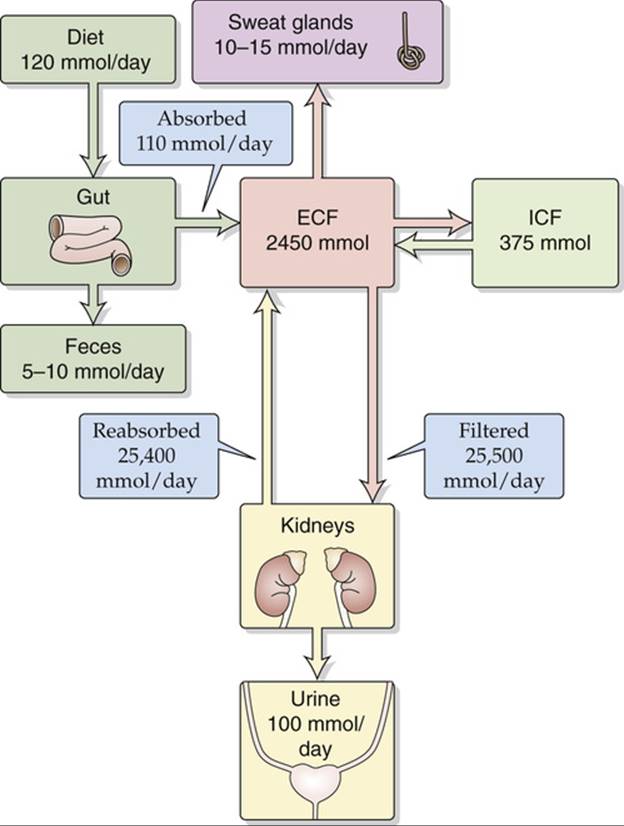Gerhard Giebisch, Erich E. Windhager, Peter S. Aronson
The kidneys help to maintain the body's extracellular fluid (ECF) volume by regulating the amount of Na+ in the urine. Sodium salts (predominantly NaCl) are the most important contributor to the osmolality of the ECF; hence, where Na+ goes, water follows. This chapter focuses on how the kidneys maintain the ECF volume by regulating excretion of Na+ and its most prevalent anion, Cl−.
The normal daily urinary excretion of Na+ is only a tiny fraction of the total Na+ filtered by the kidneys (Fig. 35-1). The filtered load of Na+ is the product of the glomerular filtration rate (GFR, ~180 L/day) and the plasma Na+ concentration of ~142 mM (neglecting the small difference from [Na+] in protein-free plasma water; see Table 5-2), or ~25,500 mmol/day. This amount is equivalent to the Na+ in ~1.5 kg of table salt, more than nine times the total quantity of Na+ present in the body fluids. For subjects on a typical Western diet containing ~120 mmol of Na+, the kidneys reabsorb ~99.6% of the filtered Na+ by the time the tubule fluid reaches the renal pelvis. Therefore, even minute variations in the fractional reabsorptive rate can lead to changes in total-body Na+ that markedly alter ECF volume and, hence, body weight and blood pressure. Thus, it is not surprising that each nephron segment makes its own unique contribution to Na+ homeostasis.

FIGURE 35-1 Distribution and balance of Na+ throughout the body. The values in the boxes are approximations. ICF, intracellular fluid.
Na+ and Cl− Transport by Different Segments of The Nephron
Na+ and Cl−, and Water Transport at the Cellular and Molecular Level
Regulation of Na+ and Cl− Transport